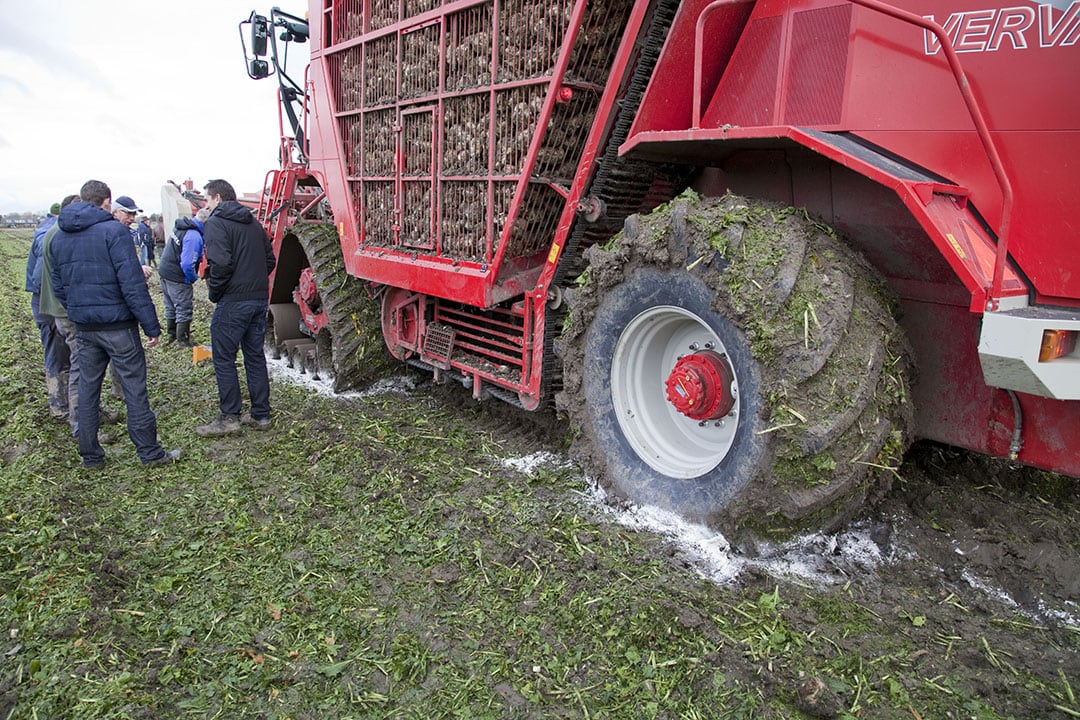‘Super wide tires or tracks conceal a deeper danger’

As we march boldly into the future of agriculture, it’s crucial that we pause for a moment to reflect on a silent but insidious threat lurking beneath our colossal farming machinery. It’s time to address the growing concern of soil compaction, a menace that creeps upon us as our machines grow larger and our fields more demanding.
Imagine this: the pressure a farming machine exerts on the soil is a delicate balance between its weight and the surface area it touches. Increase the surface area, and you reduce the pressure per square centimeter. This can be achieved by lowering the weight – which is the most difficult path because it is at the expense of capacity and efficiency – or opting for extra wider tires or, as currently in vogue, rubber tracks.
Wide tires invite to make machines even bigger
Rubber tracks have become the go-to choice for self-propelled harvesters, especially considering the challenges they face during the harvest season when conditions are far from ideal. These systems were once reserved as a last resort for rescuing crops from waterlogged fields. Today, they‘re embraced as an effective means of preserving soil health. As a result, harvesting machines are now commonly delivered straight from the factory with track undercarriages as standard or optional features.
Text continues below picture

Limits to machine weights
However, it’s imperative to acknowledge that there are limits. To combat compaction in field lanes, it’s essential to keep machine weights as low as possible. Tire pressure also plays a vital role. When dealing with the same axle load, opting for wider tires is only beneficial for the soil if the tire pressure can be reduced, ideally below 1 bar (14.5 pounds per square inch) and even lower, around 0.5 bar (7,2 pounds per square inch), for spring planting and seeding.
Soil compaction beyond the reach of subsoilers
While tire technology has advanced, offering greater contact surface areas, it’s common practice to offset these gains by increasing axle loads, effectively maintaining soil pressure levels. In some instances, this might even worsen compaction, pushing it deeper into the soil layers below the tillage zone, as science proves, rendering it nearly impossible to remedy, even with deep subsoilers.
Nevertheless, considering the same axle load, wider tires offer a more effective means of combating soil compaction than merely adjusting tire pressure. Uncompacted soil possesses superior moisture retention and provides better conditions for germination and root penetration, leading to yield increases ranging from 10 to more then30 percent, depending on various factors such as crop type, soil composition, and regional climate.
Tremendous advantages
The danger in our current agricultural practices lies in the misconception that wider tires or rubber tracks automatically equate to reduced compaction. This notion often invites the temptation to make machinery heavier and more massive, enhancing capacity by expanding the bunker size on combines, sometimes even with readily available aftermarket kits.
In conclusion, modern, flexible, super-wide tires, and advanced rubber track undercarriages offer tremendous advantages to agriculture but come with an increased need for responsible use.



